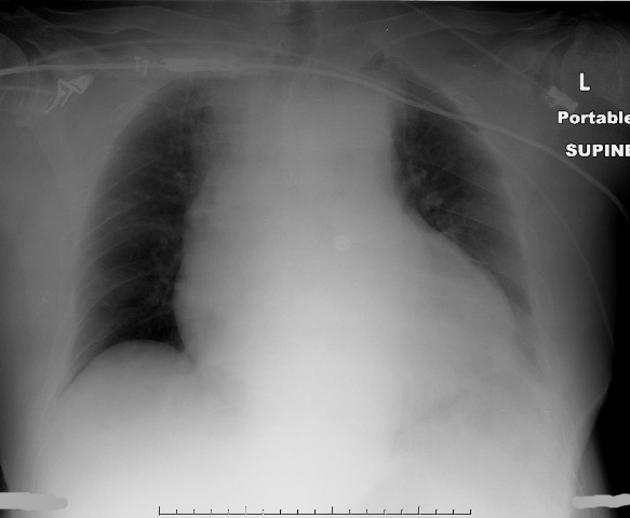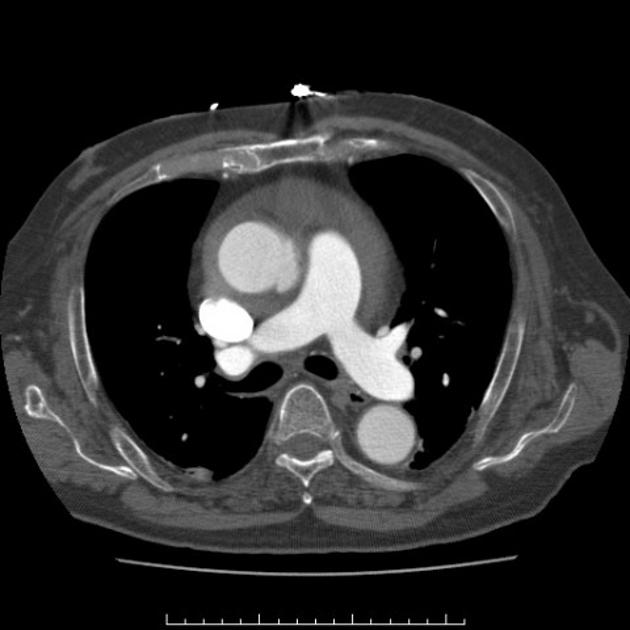Presentation
History of hypertension and hypercholesterolemia found unconscious in nursing home.
Patient Data

The AP view of the chest shows widening of the mediastinum and cardiomegaly.

The contrast enhanced CT images show a Stanford type A dissection of the ascending aorta extending retrograde down to the aortic root and rupturing into the pericardial sac causing tamponade.
Case Discussion
Aortic dissection is associated with hypertension, Marfan syndrome and a bicuspid aortic valve. It commonly extends antegrade from either close to the aortic root (Type A) or just beyond the left subclavian artery (Type B). Less common is retrograde extension with rupture into the pericardial sac. There is about a 80% mortality within the first 2 weeks and an operative mortality of 25%. Management includes controlling hypertension. Reasons for surgical management include an enlarging aorta and, as in this case, pericardial tamponade.




 Unable to process the form. Check for errors and try again.
Unable to process the form. Check for errors and try again.